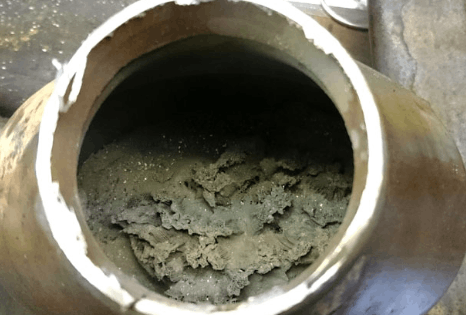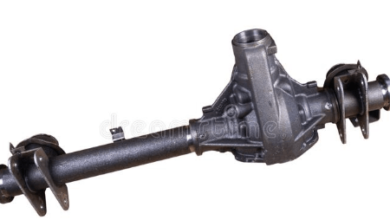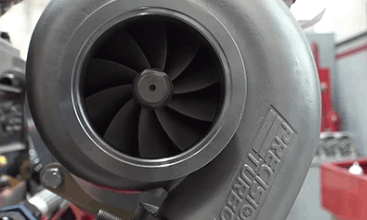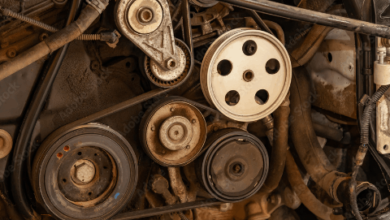How to Unclog a Catalytic Converter? Easy Way to Solve!
Catalytic converter is a very important part of the exhaust system of your car. The main duty of the catalytic converter is to reduce the harmful emissions in your exhaust gases. Once the exhaust causes are produced in the internal combustion engine, it is sent to the exhaust system to expel to the atmosphere. But these exhaust gases must go through the catalytic converter to reduce the harmfulness of these gases. But after a while, there can be problems such as a clogged catalytic converter. And probably you are looking for a solution how to unclog a catalytic converter. Here we will provide different ways to do it.
How to Unclog a Catalytic Converter? Different Ways

There are different kinds of ways according to the seriousness of the problem. You can apply one of them according to your experience in car mechanics or according to the seriousness of the problem. Check the different ways and you can apply the different steps to each way.
Use Catalytic Converter Cleaners
In the auto markets, there are different kinds of catalytic converter cleaners. These are designed to unclog your catalytic converter and clean the accumulated doors inside the small channels of the catalytic converter.
If you take a look at the internet or if you take a look at the local auto shops, you can easily find one of them. And also the use of them is very basic. You just need to follow these steps:
- First of all, you need to be sure that in your gas tank, you need to have 25% off fuel.
- Then pour your catalytic converter cleaner directly into your gas tank.
- Drive your car for 15 minutes.
- Once the fuel tank drains, the catalytic converter cleaner will do its job. You can be sure that all the small dirt accumulations inside the catalytic converter will be solved.
We need to state that it is not a complete solution to the very bad accumulated dirt inside your catalytic converter. If your situation is very bad and if the accumulated dirt is very solid and is very hard to solve, you need to proceed to the other ways.
Unclogging the Catalytic Converters by Ripping Them Off
Note: The following method involves a more advanced approach and should be undertaken by experienced car mechanics familiar with tools and safety precautions.
Ripping off the catalytic converter is a challenging but effective method to solve even the toughest accumulated specks of dirt. Before proceeding, it’s crucial to have a good understanding of the general structure of catalytic converters. They are typically located beneath your car, so lifting your car with reliable hydraulic lifters is necessary to access and remove the catalytic converter. Ensure the lifters are secure and there are no slip-offs to prevent accidents.
Here are the steps to rip off the catalytic converter:
- Lift the car to a necessary level using hydraulic lifters.
- Follow the tailpipe of your car towards the front side until you reach a bumpy shape attached to the exhaust pipe. This bumpy shape is usually cylindrical or spherical.
- In most cars, the catalytic converters are connected to the exhaust pipes with fasteners. If you have the appropriate tools, removing these fasteners will allow you to take the catalytic converter off. However, if the catalytic converter is welded to the exhaust pipe system, you’ll need special cutters to detach it. Keep in mind that reinstalling the catalytic converter will require welding.
- Once you have successfully removed the catalytic converter from your car, you can proceed with two ways to clean the system.
Unclogging Catalytic Converters with Pressure Cleaners
- Adjust the pressure level of a pressure cleaner to a moderate setting.
- Directly aim the pressure cleaner through the channels to unclog the accumulated dirt.
- Thoroughly rinse the catalytic converter to ensure all dirt and debris are removed before reinstalling it in your car.
Note: This method is intended for informational purposes only. Ripping off the catalytic converter may not be legal in some regions due to emissions regulations. Always consult local laws and regulations before attempting any modifications to your vehicle’s exhaust system.
Unclogging Catalytic Converter with Soapy Water
If the accumulated dirt is more severe than usual, you can try using soapy water as a solution. Prepare a mixture of soapy water using dishwasher soap and leave the catalytic converter submerged in the solution for 24 hours. After 24 hours, you will notice that the stubborn specks of dirt have softened.
Next, use a pressure washer or cleaner to remove all the dirt from the catalytic converter. Make sure to thoroughly dry the channels. You can use special heaters like hair dryers to remove moisture from the channels or leave the catalytic converter in a heated environment for 4 hours to eliminate any remaining moisture.
These are general methods to deal with accumulated dirt inside the channels of the catalytic converter.
Symptoms of a Clogged Catalytic Converter
There are several symptoms that indicate a clogged catalytic converter in your car. It’s important to address these problems:
- Bad emissions: One of the first signs is failing emission tests due to the catalytic converter not functioning properly. It fails to reduce harmful emissions from the internal combustion engine.
- Rotten egg smell: Another significant symptom is the presence of a rotten egg smell, which occurs due to unreduced NOx emissions. This indicates that the catalytic converter is not working effectively.
- Reduced horsepower: Accumulated dirt in the narrow channels of the catalytic converter creates resistance, making it harder for the engine to expel exhaust gases. This leads to a decrease in horsepower.
- Check engine light: The check engine light on your dashboard will illuminate, indicating a problem with the engine system.
- Engine stall: Stalling and sputtering of the engine is a major symptom. Pressing the gas pedal may not provide the expected power output.
- Decreased fuel efficiency: A clogged catalytic converter causes the engine to consume more fuel as it struggles to expel exhaust gases. Decreased fuel efficiency is a common result of this issue.
Different Ways to Diagnose a Clogged Catalytic Converter
To confirm whether your catalytic converter is clogged, you can perform simple tests on your engine or catalytic converter. It is important to diagnose the problem accurately before considering removing the entire catalytic converter system from your car.
Measuring the Vacuum of the Intake Manifold
This test is simple but requires a vacuum gauge:
- Install the vacuum gauge on your intake manifold.
- Have someone rev the engine to 2000 RPM.
- Read the gauge, which should show around 20 or 22 inches of mercury.
- Have your friend increase the engine RPM to 3000. The pressure value should increase.
- When the RPM is decreased back to 2000, the pressure on the intake manifold should decrease to the initial levels you read.
If the pressure level doesn’t decrease to the starting levels immediately after decreasing the RPM, it indicates a clogged catalytic converter.
Temperature Test
This basic temperature test involves measuring the temperature difference between the inlet and outlet pipes of the catalytic converter. The temperature difference should be between 50 and 100 degrees Fahrenheit. Use a kitchen thermometer to measure the pipe temperatures. If there isn’t a noticeable temperature difference, there is a high probability that the catalytic converter is clogged.
Measuring the Pressure of the Oxygen Sensor
The oxygen sensor is connected to the catalytic converter. You can remove the oxygen sensor by rotating it and attach a back pressure gauge. The back pressure gauge should read a pressure lower than 3 PSI. If the reading is higher than 3 PSI, it is likely that the catalytic converter is clogged.
Can a Clogged Catalytic Converter Damage the Engine?
A clogged catalytic converter places an additional burden on the engine. If the situation is severe enough, it can lead to more serious symptoms than those mentioned earlier. Therefore, a clogged catalytic converter can potentially damage the engine, but the level of accumulated dirt is an important factor.
Conclusion
We have provided various perspectives on how to unclog a catalytic converter, explaining different methods in detail. By understanding the symptoms and diagnostic tests, dealing with a clogged catalytic converter in your car becomes easier. If you have further questions or need additional guidance on cleaning your car’s catalytic converter, please feel free to ask.
Check the related topics about catalytic converters for more information;
How Many Catalytic Converters Does a Car Have? Simple Answer!
Catalytic Converter Cutter – What is That?
How to Remove Catalytic Converter? Simple Steps to Replace It
Signs of Stolen Catalytic Converter – What to Do?
References:
Warning Signs of a Bad Catalytic Converter – Genemesser Chevrolet



